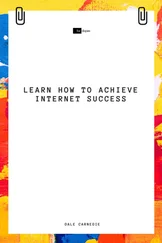Astrid Wood - How Cities Learn
Здесь есть возможность читать онлайн «Astrid Wood - How Cities Learn» — ознакомительный отрывок электронной книги совершенно бесплатно, а после прочтения отрывка купить полную версию. В некоторых случаях можно слушать аудио, скачать через торрент в формате fb2 и присутствует краткое содержание. Жанр: unrecognised, на английском языке. Описание произведения, (предисловие) а так же отзывы посетителей доступны на портале библиотеки ЛибКат.
- Название:How Cities Learn
- Автор:
- Жанр:
- Год:неизвестен
- ISBN:нет данных
- Рейтинг книги:4 / 5. Голосов: 1
-
Избранное:Добавить в избранное
- Отзывы:
-
Ваша оценка:
- 80
- 1
- 2
- 3
- 4
- 5
How Cities Learn: краткое содержание, описание и аннотация
Предлагаем к чтению аннотацию, описание, краткое содержание или предисловие (зависит от того, что написал сам автор книги «How Cities Learn»). Если вы не нашли необходимую информацию о книге — напишите в комментариях, мы постараемся отыскать её.
How Cities Learn — читать онлайн ознакомительный отрывок
Ниже представлен текст книги, разбитый по страницам. Система сохранения места последней прочитанной страницы, позволяет с удобством читать онлайн бесплатно книгу «How Cities Learn», без необходимости каждый раз заново искать на чём Вы остановились. Поставьте закладку, и сможете в любой момент перейти на страницу, на которой закончили чтение.
Интервал:
Закладка:
In South Africa, a desire to copy from urban experiences elsewhere is reinforced today through the language of south–south exchange, which suggests that localities across the global south may find better solutions by looking to one another rather than to their colonial metropole. Southern cities are presumed to share commonality with their postcolonial neighbors, and by exchanging their experiences and experiments, it is thought that they might develop more imaginative and effective solutions to remedy their urban challenges. This political argument has fueled the circulation of supposedly southern-generated best practices like BRT. Questions remain, however, regarding the extent to which this learning impacts development in southern cities, either by reinforcing former colonial ties through contemporary practices of exchange or by shattering those dependencies, instead generating southern solutions to southern problems. Elsewhere I have argued that south–south learning may lead cities toward more effective policy solutions, but efforts need to be made to ensure that learning is not merely political window-dressing (Wood 2015b). This is especially important in providing substance to support localities in their determination to reject apparent best practices. Evidence from this book supports contemporary academic and practical efforts at decentering epistemic knowledge, by encouraging (South African) cities to draw from a wider array of examples from within South Africa and across the postcolonial world.
A focus on BRT adoption provides an opportunity to reinterpret both the historical and contemporary South African city as a site of “mimicry” and “mimesis” (Mbembe 2004). Mbembe (2008: 7) suggests “if there is ever an African form of metropolitan modernity, then Johannesburg will have been its classical location”; and Robinson (2003: 260) concludes, “Johannesburg is an antidote to [a] divisive tradition in urban studies and a practical example of how cities can be imagined outside of the global/developmentalist division”. Mimicry, however, does not occur simply because reforms from elsewhere are better, but rather because the very action of copying may accelerate local policymaking. Nevertheless, Mbembe argues that even cities “born out of mimicry are capable of mimesis”, by establishing “similarities with something else while at the same time inventing something original” (2004: 376). This helps explain how South African cities learn of a policy or practice from elsewhere, transfer it across boundaries, and localize it to suit the South African city.
How Cities Learn contributes to efforts to transform transport geography into a more inclusive and global endeavor, by examining the production and distribution of transportation knowledge in the global south. In a related project, we argue against the continued dominance of northern transportation models and best practices, and instead highlight locally derived experiments in both the global north and south (Wood et al. 2020). This means not only featuring the achievements of cities that are “off the map” (Robinson 2006), but also de-centering the locations in which best practice is solidified and sent forth. A decolonial approach to transport geography challenges its technocratic objectivism and mathematical modeling, which limit the promotion of southern experiments. Transportation scholars have begun to engage with these strategies – for instance, a special issue featuring urban mobilities in the global south (Priya Uteng and Lucas 2018) – but much more needs to be said of transport geography from, of and by the global south.
This book is grounded within South African urban transportation research. It draws on calculations of shifting mobility patterns by Roger Behrens in Cape Town (2013, 2014, 2015), Jackie Walters in Johannesburg (2009, 2013) and Christoph Venter in Tshwane (2013), as well as Gordon Pirie’s (2013, 2014) studies of transportation practices, policies and perspectives. Recent studies of BRT user experience (Behrens and Wilkinson 2003; Maunganidze and Del Mistro 2012; Schalekamp and Behrens 2008), government efforts to reform the taxi industry (Schalekamp and Behrens 2013; Schalekamp et al. 2010), cycling (Jennings 2015) and transit-oriented development (Bickford and Behrens 2015), also provide the bedrock for this analysis. Additionally, it overlaps BRT adoption with broader considerations for rapid urbanization across the continent, infrastructure development and its potential for poverty alleviation, climate change and resilience, especially in disenfranchised communities, and the juxtaposition between urban economic vitality and social justice.
This book employs “policy mobilities” (Peck and Theodore 2010a; McCann and Ward 2011) to contribute to transport geography by examining how policymakers address issues of mobility and immobility, and how these decisions are made in reference to similar practices taking place elsewhere. It explains the process by which BRT has been embraced, encompassed and even at times excluded by local policy actors, their interactions with global advocates and inter-referencing across space and time. In so doing, it attends to the ways in which transportation solutions are engineered in relation to socio-political spaces, specifically interrogating the process through which certain transportation innovations are deemed best practice.
How Cities Learn makes four key contributions to the policy mobilities literature by examining the process from one location: South Africa. First, it highlights the ways in which particular models of best practice travel, not autonomously by virtue of their own universalist qualities, but rather via a complex political economy, both internationally and domestically.
Second, the book exposes the pivotal role of often overlooked local actors in the mobility and adoption of best practice. While it might seem as if international intermediaries are the primary actors involved in BRT replication, How Cities Learn demonstrates the power of the local. Although strong personalities were at times persuasive in pushing BRT from the outside, their dominance was balanced by the bureaucratic structures that endow local implementers with the power and responsibility for initiating a new planning project. Notably, this approach highlights the factors motivating policy actors and the wider political relationships that facilitated the reception of BRT. This in turn expands our understanding of the varied direction, speed and influence of global and local influences shaping the contemporary city.
Third, the book unpacks the exchanges between actors in South African and other southern cities and, in so doing, exposes a politicized process that preferences certain sites over others, inculcates a particular understanding of best practice and otherwise mediates policy flows. The politics of south-south cooperation was used to support exchanges with South American cities while overlooking opportunities to learn from African and Indian cities. These glimpses into the process of BRT adoption in South Africa help us understand the process by which policy and policy actors connect and disconnect topographically through their physical travels, as well as topologically through relational comparisons made in city rankings and league tables.
Fourth, the book uncovers the temporalities of policy learning which are often overlooked in the policy mobilities literature. The experience of BRT in South Africa reveals persistent introduction and alteration before adoption finally ensued; innovations spread across the globe through a series of unremarkable events and repeated suggestions that ultimately sanction it as a best practice to local policy implementers. Accordingly, I argue that failure is central to policy promotion by creating a process whereby learning is deliberate and delayed, assembling alongside earlier encounters to prolong the employment of international agencies. The book demonstrates that there is much to be learned by thinking through the practices of ostensibly ineffective, fruitless or aborted mobility. This contribution also raises questions about success and failure in policy mobilities, a topic of increasing importance among scholars.
Читать дальшеИнтервал:
Закладка:
Похожие книги на «How Cities Learn»
Представляем Вашему вниманию похожие книги на «How Cities Learn» списком для выбора. Мы отобрали схожую по названию и смыслу литературу в надежде предоставить читателям больше вариантов отыскать новые, интересные, ещё непрочитанные произведения.
Обсуждение, отзывы о книге «How Cities Learn» и просто собственные мнения читателей. Оставьте ваши комментарии, напишите, что Вы думаете о произведении, его смысле или главных героях. Укажите что конкретно понравилось, а что нет, и почему Вы так считаете.












